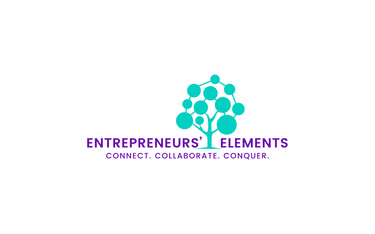When the Storm Hits You Instead of Your Suppliers — The Fall and Fight of Hudson’s Salvage Stores
7/7/20253 min read
⚠️ Case Study: When the Storm Hits You Instead of Your Suppliers — The Fall and Fight of Hudson’s Salvage Stores
Hudson’s Salvage Stores had built an empire by selling what other businesses couldn’t.
Fire-damaged inventory. Flooded stock. Insurance claim write-offs. That was their model — salvaging the unsalvageable.
But in 2005, the irony hit hard.
Hurricane Katrina slammed the Gulf Coast, and suddenly Hudson’s became the disaster.
Out of 39 stores across Mississippi, Alabama, and Louisiana, half were destroyed or left unusable.
More than 350 employees were displaced. Power lines down. No fuel. No backup plan.
And the business that specialized in chaos had no plan for its own.
📉 The Fallout
No disaster plan = weeks of delay and no real protocol for recovery.
Lost revenue from closed stores and customers who couldn’t get what they needed.
Supply chain halted — even surviving stores had no way to restock, no staff to run them.
Psychological impact: Founder Bill Hudson called it the “most fearful moment” of his business life. He thought it might all be over.
Let’s pause here.
This wasn’t about bad margins. This wasn’t a brand problem.
This was a classic case of what every founder fears — a massive, uncontrollable, external hit.
🔧 What They Did Next — A Founder’s Masterclass in Learning the Hard Way
To Hudson’s credit, they didn’t roll over. They rebuilt — smarter.
Created a real disaster protocol: evacuation timelines, employee contact plans, fuel backup systems.
Installed generators + an on-site fuel station for when utilities fail again.
Partnered with FEMA: let FEMA teams use Hudson’s locations to distribute preparedness materials, boosting community trust.
Changed company policy: Employees would now evacuate earlier than official orders — no more last-minute scrambles.
They didn’t just rebuild operations.
They rebuilt culture: safety-first, proactive, community-oriented.
And they didn’t stop there.
They started educating customers through their own company newsletter — The Hudson Times — on how to prepare for hurricanes. A salvage chain became a community resource.
That’s real founder leadership.
📦 The Long-Term Playbook — What Worked, What Didn’t
Hudson’s rebounded. For a time.
They rebranded. Grew. Became Channel Control Merchants.
Launched Dirt Cheap, Treasure Hunt, expanded into California and even Canada.
But growth has its cost.
By 2024, they were filing Chapter 11 bankruptcy.
Why?
The salvage supply chain changed. Returns became data-driven. Big retailers stopped offloading as much.
Overexpansion. Too many markets, too fast.
Consumer behavior shifted. E-commerce ate into the bargain bin crowd.
Rising debt. Rising interest rates. Rising operational complexity.
All stores now closing.
End of an era.
💡 Key Lessons for Founders
External chaos will hit your business eventually — prepare for it now, not later.
Don’t wait for a storm, a cyberattack, or a supplier shutdown. If you rely on physical infrastructure, employee access, or real-time ops — you need redundancy. Backup power. Early-warning systems. Even a printed emergency playbook.
Your staff’s personal safety is a business priority.
Letting employees evacuate early isn't just humane — it protects retention, culture, and reputation.
Community partnerships build more than goodwill.
Hudson’s FEMA collaboration wasn’t PR fluff. It turned stores into hubs for relief. In a crisis, being useful to your community makes you essential.
Surviving the first disaster isn’t enough — your model has to evolve.
Hudson’s pivoted hard post-Katrina, but didn’t adapt fast enough when the retail salvage model itself started breaking. As retailers moved online, and returns became more controlled, their supply dried up.
Debt-fueled expansion without demand data = suicide.
They expanded fast after recovering. Too fast. And the new stores didn’t deliver the numbers. You can recover from a storm, but not from aggressive scaling that’s disconnected from consumer shifts.
🧠 EE Founder Reflection:
Every founder plans for growth.
Almost no founder plans for disaster.
We don’t think about:
What happens if the internet’s out for 72 hours?
What happens if our top 3 people can’t work for 2 weeks?
What if my office floods?
What if my market suddenly disappears?
You don’t need to panic. You need to build resilience — in your systems, your people, your supply chain, and your cash flow.
💬 What to Ask Yourself (Today, Not Later):
Do I have a written disaster plan — or just good intentions?
Can my business function for 48 hours with no electricity or staff?
Have I trained my team on what to do during a true emergency?
Am I overexposed to one market, one supplier, one model?
If your answers are weak — let Hudson’s story be your catalyst.
Drop your thoughts. What would YOU do differently if a Katrina hit tomorrow?
Would your business survive — or disappear like the merchandise Hudson’s used to sell?
Let’s talk about real resilience — not just profits.
